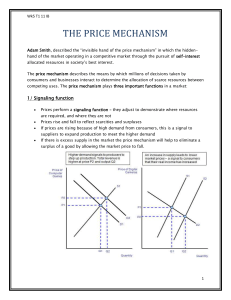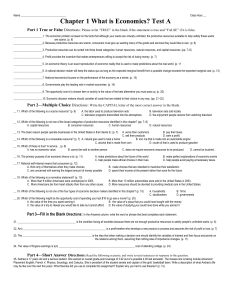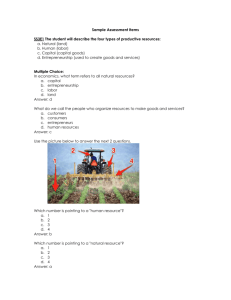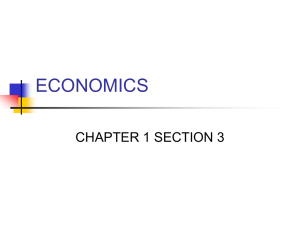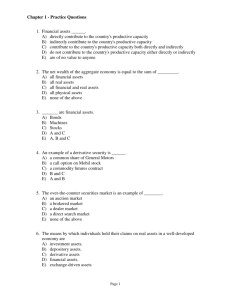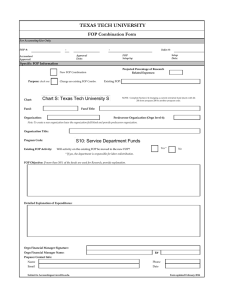FOP and Allocation
advertisement
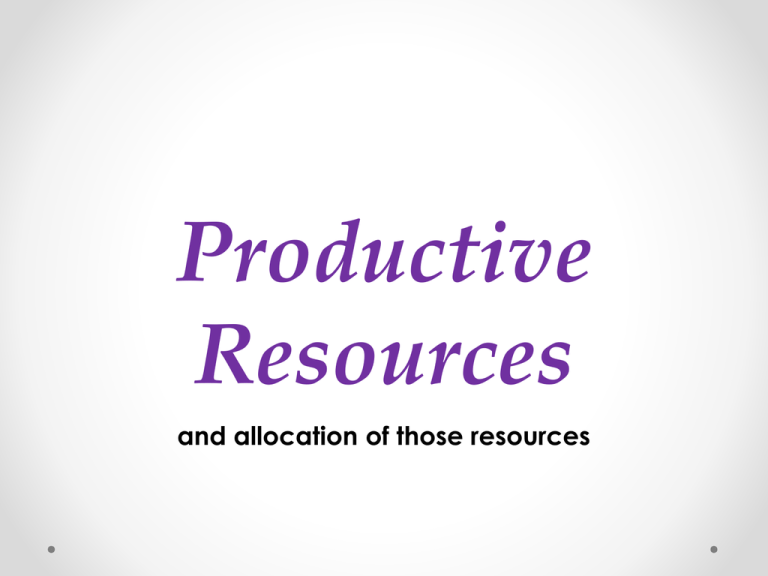
Productive Resources and allocation of those resources Standards • SSEF1b: Define and give examples of productive resources • SSEF1c: List a variety of strategies for allocating scarce resources What are Productive Resources? • Anything used to produce goods and services • 4 types of Productive Resources. We call them the • “Factors of Production” • Or FOP’s • CELL • Capital, Entrepreneurship, Land, Labor FOP: Land • • “Gifts of nature” Anything that occurs naturally • Examples: FOP: Labor • the physical abilities and time of human beings available to produce goods and services. FOP: Capital • the tools, machines, and skills/knowledge/training of human beings. o Physical Capital – tools, machines, etc. o Human Capital – skills, knowledge, and/or training of individuals. FOP: Entrepreneurship • someone who takes a risk to start a business by bringing together the other three factors of production in an innovative way. Allocating Scarce Resources • Society has to decide how to allocate its scarce resources. Allocate: To distribute (according to a plan) Allocation Strategies • Authority • Governments make the decision • Authoritarian governments = use military/police for enforcement of resource allocation. • Rationing of a resource • Supply/Demand • More supply = Lower price • Less supply = Higher Price Allocation Strategies • Random Selection/ (Lottery) • Everyone has an equal chance of getting resource • Inefficient = resources go to those who don’t need it/want it. • Ex: Farm land • First come/First Served • First in line gets the resource: • Concerts • Sporting events • Stores Allocation Strategies • Personal Characteristic • Resources are distributed based on need or merit. • i.e.: Scholarships, Jobs • Contest • Resource go to the person who wins. • i.e.: Race, Academics (valedictorian), Test of knowledge Standards • SSEF1b: Define and give examples of productive resources • SSEF1c: List a variety of strategies for allocating scarce resources • List 5 facts that will help you remember this lesson: • • • • •

